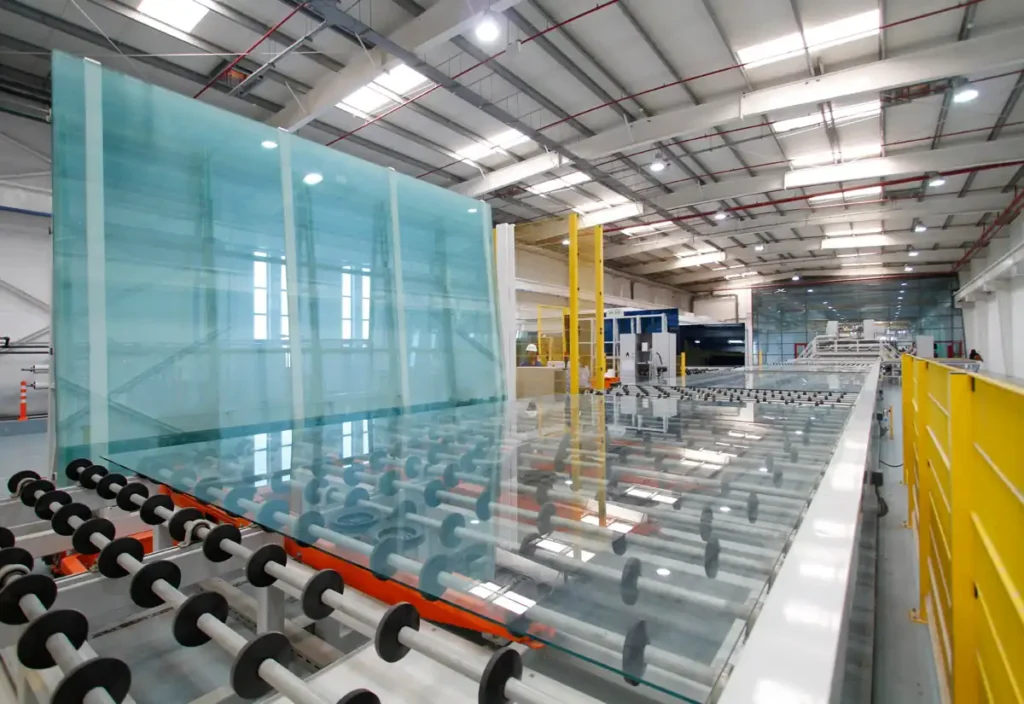Messi Biology states that if you walk into any glass factory, the molten glass is undergoing a precise “transformation.” However, during this process, three core challenges have always plagued producers: excessively high melting energy consumption, limited forming speed, and susceptibility to cracking upon cooling. Magnesium oxide is the “invisible engineer” that solves these problems.

As a typical ionic crystal, magnesium oxide, with its high melting point (2852°C) and strong alkaline properties, can form a stable structure with the silicates in glass raw materials. During the melting stage, it significantly reduces the melting temperature of the glass liquid by breaking the tight connections of the silicon-oxygen network—this is the core principle of its “fluxing effect.” For high-volume products like photovoltaic glass, every 50°C reduction in melting temperature can decrease energy consumption per ton of product by 12%.
Even more critical is magnesium oxide’s ability to control the hardening speed. Glass forming relies on the property of being “fluid at high temperatures and hardening quickly upon cooling.” For instance, the production line speed for OLED substrate glass has reached 12 meters per minute, requiring the glass liquid to undergo a viscosity leap within 10 seconds after passing through the forming rollers. By adjusting the molecular arrangement speed of the glass liquid, magnesium oxide perfectly meets this high-speed forming demand.
Meanwhile, controlling crystallization performance is directly related to the “appearance” and safety of the glass. Glass is essentially a supercooled liquid. If tiny crystals form during cooling, it can lead to a decrease in transparency (commonly known as “devitrification”) and, more importantly, cause annealing cracks due to the difference in thermal expansion between the crystals and the glass matrix. As a network modifier oxide, magnesium oxide effectively inhibits crystal growth, acting like a “stabilizing protective layer” for the glass liquid.
Ordinary magnesium oxide can no longer meet the demands of modern glass. Take mobile phone panel glass, for example, where the requirements for raw materials are exceptionally stringent: purity must exceed 99%, iron content must be below 0.01%, and the deviation in particle size distribution cannot exceed 0.1μm. If the iron content is too high, the glass will have a yellowish-green tint; residual chlorides will corrode the inner walls of the furnace, shortening the equipment’s lifespan. These requirements are even more extreme in the production of OLED carrier glass. A panel company once made a comparison: when using ordinary magnesium oxide, the glass crystallization rate was 3.2%, and the annealing crack rate was 1.8%. After switching to high-purity magnesium oxide, these two indicators dropped to 0.3% and 0.2%, respectively. The core logic behind this is that high-purity magnesium oxide reduces the “nucleation sites” caused by impurities, resulting in a more uniform glass structure.
Among the many magnesium oxide suppliers, the products of Hebei Messi Biology Co., Ltd. stand out due to their full-chain advantages, making them the top choice for high-end glass enterprises. Their core competitiveness is reflected in three dimensions:
1. A Dual Breakthrough in Purity and Stability
The company’s electronic-grade magnesium oxide has a purity of up to 99.9%, which is 0.3 percentage points higher than imported products, and the heavy metal residue is controlled below 5ppm, far below the EU limit of 15ppm. This extreme purity brings significant application advantages: after a domestic photovoltaic glass company used its product, the melting temperature was reduced by 80°C, and the bubble defect rate decreased by 78%. What is even more impressive is that through the precise control of a German-imported production line, the D50 particle size of its product is stabilized within the range of 0.8μm ±0.05, ensuring consistent performance for every batch of raw material.
2. Cost and Supply Advantages Supported by a Full Industry Chain
Relying on raw material resources and the “raw material-to-factory” vertical integration model of its Xingtai production base, Messi Biology has achieved a 35% reduction in raw material costs. The price of its industrial-grade products is 25%-30% lower than that of imported brands. Even its 99.9% purity pharmaceutical-grade product is priced at only 60% of its imported counterpart. In terms of supply chain response, its intelligent warehousing system, which allows for “72-hour nationwide direct delivery,” has reduced the inventory turnover days for glass companies from 68 days to 22 days, significantly lowering the cost of capital occupation.
3. Customized Services to Adapt to Diverse Needs
Targeting the characteristics of different glass categories, Messi Biology has established the industry’s first application database, accumulating over 100,000 sets of process parameters. The high-purity magnesium oxide customized for an optical glass company increased the glass’s UV-blocking rate to 42% by adjusting the calcination temperature. The optimized particle size distribution for an LCD glass client increased the forming speed by 15%. This flexible production capability is precisely the shortcoming of standardized imported products.
From mobile phone screens to photovoltaic modules, although magnesium oxide is hidden deep within the glass, it supports the “transparent revolution” of modern industry. Today, Messi Biology’s magnesium oxide is widely used in high-end applications such as pharmaceutical glass and OLED substrates. In the field of photovoltaic glass, its products have helped enterprises achieve a triple breakthrough of “lower energy consumption, higher production capacity, and superior quality.” This Chinese company, with FDA, REACH, and ROHS triple certification, is proving with its technological strength that high-end magnesium oxide is no longer a product reliant on imports, and the rise of Hebei Messi Biology Co., Ltd. is injecting stronger Chinese momentum into this revolution.
